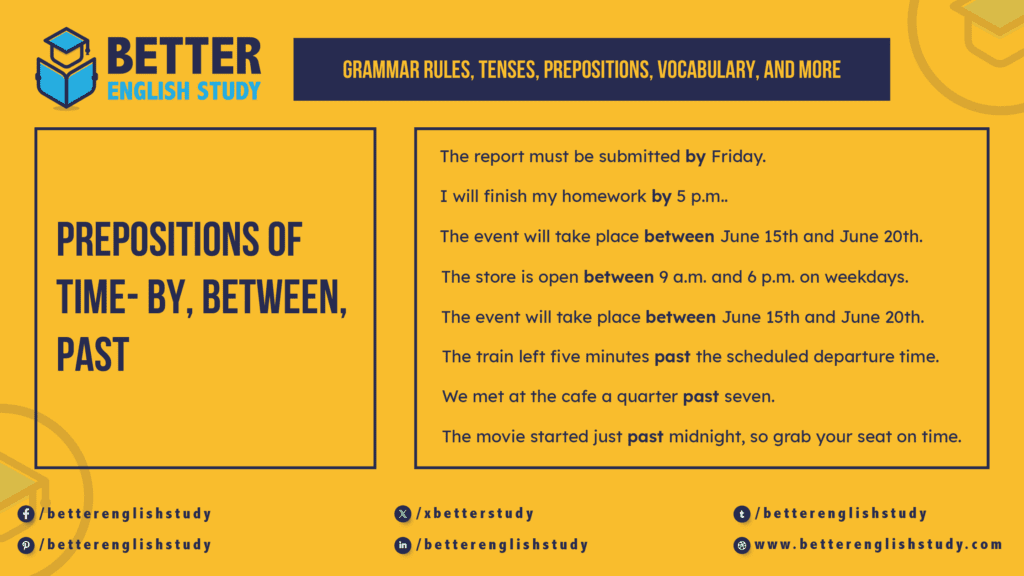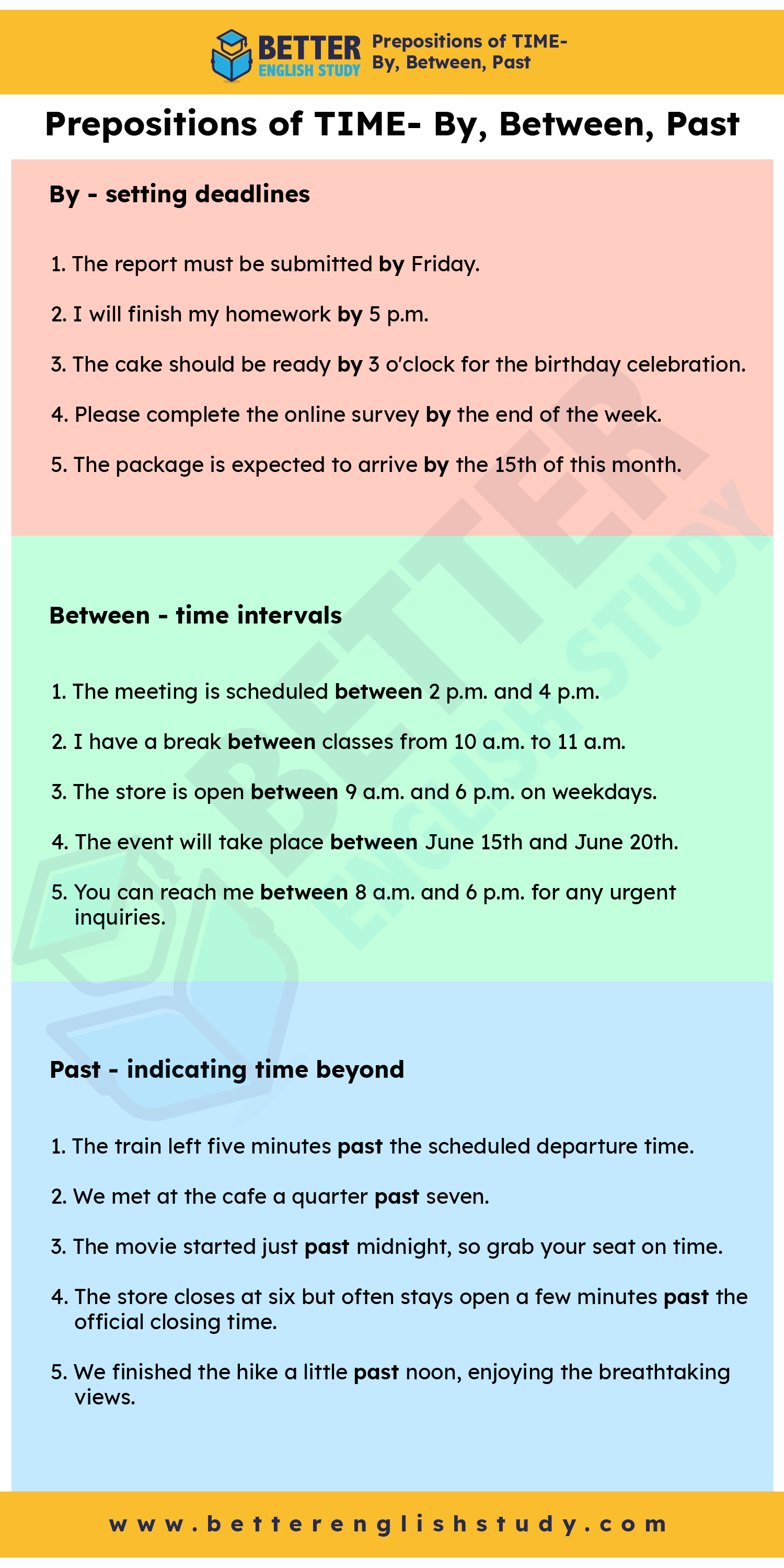
Time, an ever-elusive concept, becomes even more intricate when learning a new language. For English learners, mastering prepositions is a crucial step toward effective communication.
In this guide, we’ll unravel the complexities of prepositions of time, specifically focusing on “By,” “Between,” and “Past.” So, buckle up as we embark on a linguistic journey to enhance your understanding of how these prepositions shape our perception of time.
By – setting deadlines
The preposition “by” is commonly used to indicate a deadline or a point in time by which an action is expected to be completed.
Example sentences:
- The report must be submitted by Friday.
- I will finish my homework by 5 p.m.
- The cake should be ready by 3 o’clock for the birthday celebration.
- Please complete the online survey by the end of the week.
- The package is expected to arrive by the 15th of this month.
“By” implies completion or accomplishment before a specified time.
Between – time intervals
The preposition “between” is used to express time intervals, highlighting a period that starts and ends within specified limits.
Example sentences:
- The meeting is scheduled between 2 p.m. and 4 p.m.
- I have a break between classes from 10 a.m. to 11 a.m.
- The store is open between 9 a.m. and 6 p.m. on weekdays.
- The event will take place between June 15th and June 20th.
- You can reach me between 8 a.m. and 6 p.m. for any urgent inquiries.
“Between” denotes a range or duration within which an event occurs.
Past – indicating time beyond
The preposition “past” is used to refer to a point in time that has already transpired.
Example sentences:
- The train left five minutes past the scheduled departure time.
- We met at the cafe a quarter past seven.
- The movie started just past midnight, so grab your seat on time.
- The store closes at six but often stays open a few minutes past the official closing time.
- We finished the hike a little past noon, enjoying the breathtaking views.
“Past” indicates a time that has gone by, adding specificity to moments in the past.

Combining Prepositions
To convey more complex relationships with time, prepositions can be combined to provide additional clarity.
Example sentence:
– I will complete the project by Monday and submit it between 2 p.m. and 4 p.m.
Mastering the usage of prepositions with time is essential for effective communication. Whether it’s setting deadlines with “by,” specifying time intervals with “between,” or referring to moments in the past with “past,” understanding these prepositions enhances language precision.
By incorporating these prepositions into everyday language, individuals can articulate time-related information more accurately and clearly.
